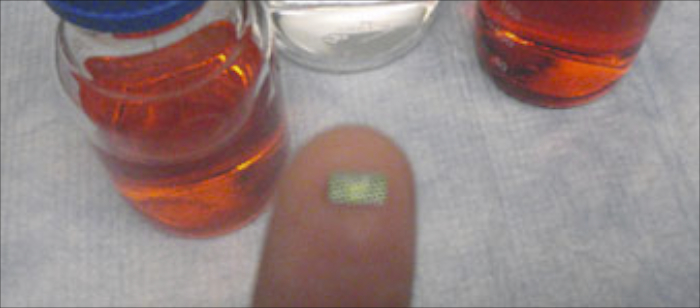
A Self-Powered In-Vitro Biosensing Microsystem
Dr. Gymama Slaughter
Computer Science and Electrical Engineering
University of Maryland, Baltimore County
11:30am-12:45pm Friday, 10 February 2012, ITE 237
Recent studies on biofuel cells have shown that energy can be harvested from biological compounds. Because of the recent biofuel cell discoveries, it possible to use inertial power scavenging design by converting interstitial glucose into energy through the coupling of enzymes and three-dimensional nanowire arrays. This talk will discuss our own contribution to identifying a pathway to embed sensing by eliminating the need for a potentiostat circuit and an external power source.
The self-powered biosensing microsystem consist of massively dense 3D nanowire cell structures fused with an energy harvesting circuit that maximizes power and energy densities while maintaining short ion transport distances, thus leading to dramatic improvement in both speed and energy efficiency of biofuel cells. Not only is such a paradigm extremely fast because of absence of a potentiostat circuit, but it is also extremely energy-efficient since the device operates at low voltage and current levels. As a result, the biosensing microsystem generates a drive signal in real-time and periodically powers an electrical device by generating and accumulating electrical power as a result of the catalysis of glucose.
Gymama Slaughter received her B.S. in Chemistry in 2001, M.S. in Chemical Engineering in 2003, and a Ph.D. in Computer Engineering from the Virginia Commonwealth University in 2005. She then joined Virginia State University as an Assistant Professor in Computer Engineering and Director of the Center for Biosystems and Engineering University. Finally, she joined the UMBC as Assistant Professor in Computer Engineering in August 2010.
Dr. Slaughter is currently the Director of the Bioelectronics Laboratory Group and oversees research and research outreach programs in the BEL Group. She develops and applies sensor-processor platforms, focusing on innovative contributions to identifying a pathway to embed sensing and processing functions in the same device to eliminate bottlenecks arising from communication between the sensor, transducer, and processor, thus, resulting in ultra-fast and ultra-low power devices.
Her research has been supported by the NSF for her diabetes research that focuses on the design and development of glucose biosensor, especially in relationship to monitoring blood glucose in diabetics. Her research interests include biosensors, microsensors, microfabrication technology, and BioMEMS and design.
Host: Prof. Joel M. Morris